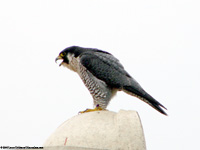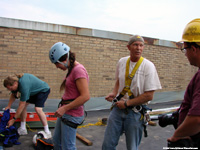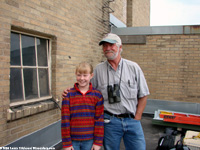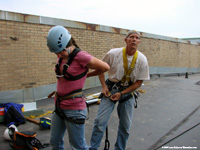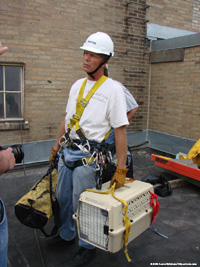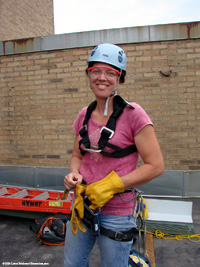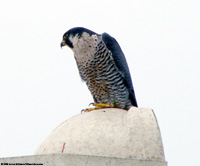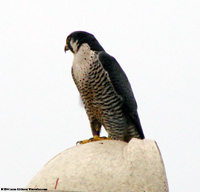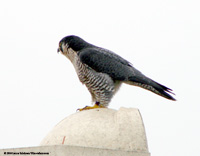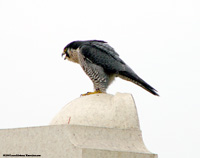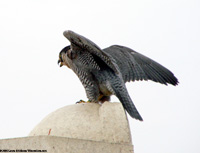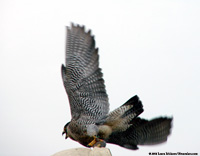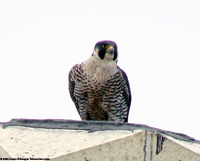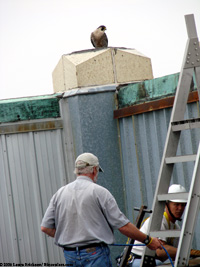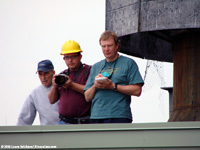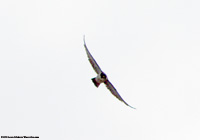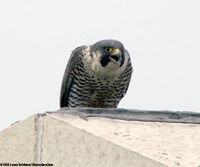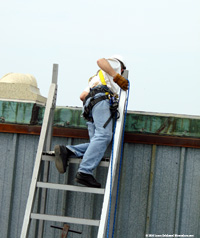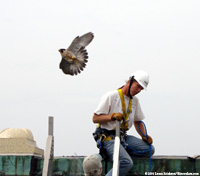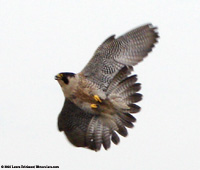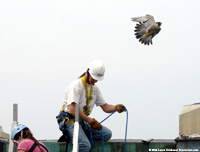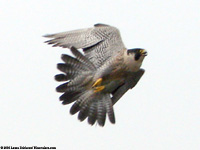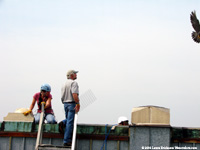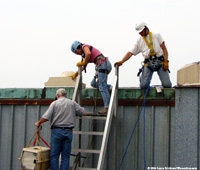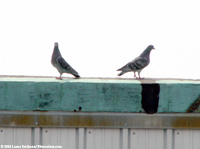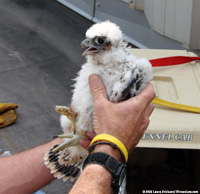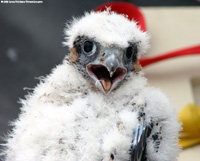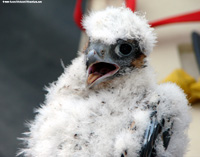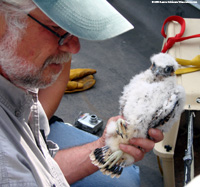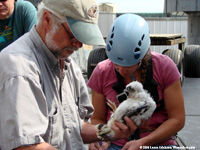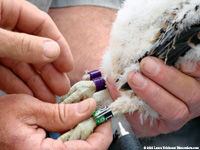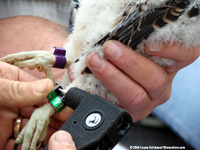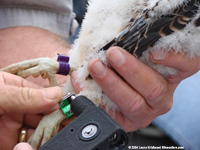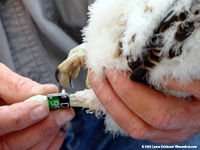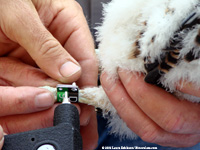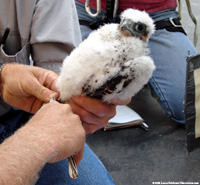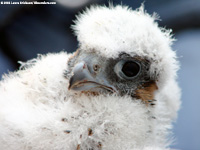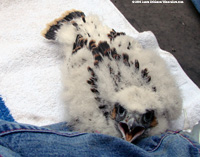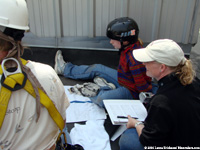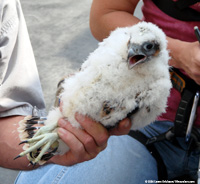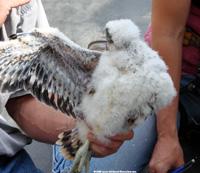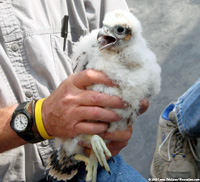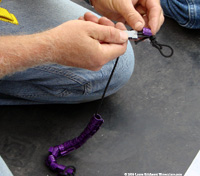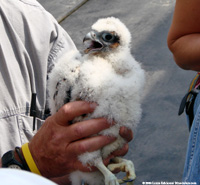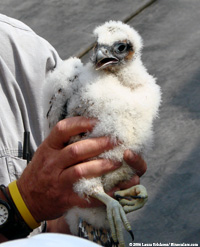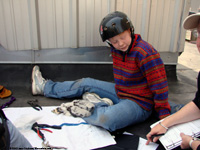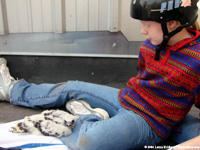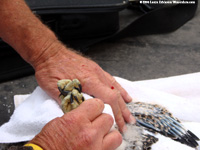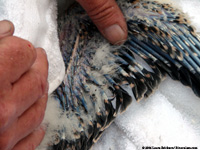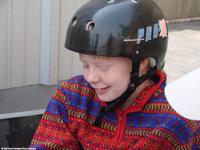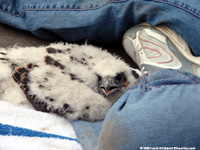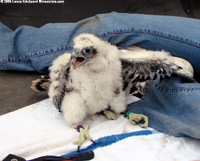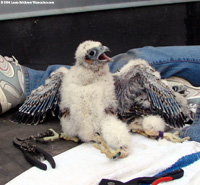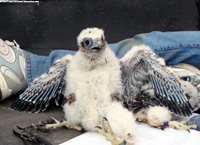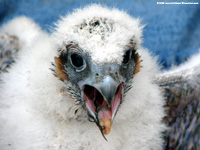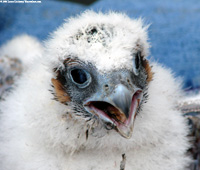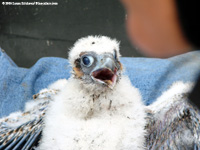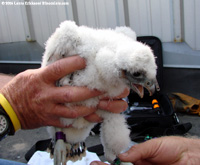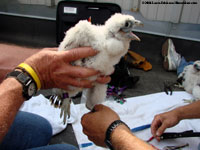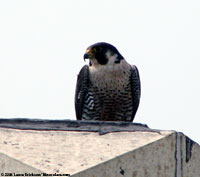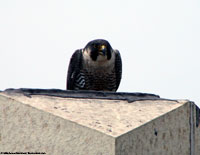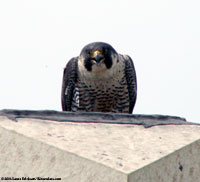Videos! All the photos and videos on this banding page were taken handholding my Sony DSC-H5 camera. |
|
|
|
|
|
|
|
|
|
|
|
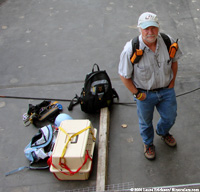 |
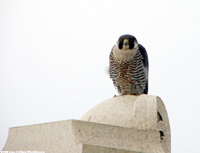 |
 |
Bob Anderson |
Amy the adult female falcon was sitting here when we arrived.
She didn't mind us getting a closer look. Or at least she didn't try to kill us. She was probably a bit more calm than expected because 1) she herself was banded a couple of weeks ago, and decided it was at least not fatal; 2) there have been people working on the roof and she's getting used to disturbances; and 3) these same people have come each of the four previous times she's nested here, done the exact same thing, and her babies were none the worse for it. |
|
|
|
Amy and Rob prepare to scale down the building. |
I'd name a falcon after her. |
Carly O'Connor and Bob Anderson. I'd name a falcon after her, too! |
|
|
|
Preparing properly takes time. |
Rob MacIntyre.
Notice how the carrier is padded. That keeps it darker and softer, calming and protecting the "eyasses" (a falconer's term for nestling hawks or falcons. It's typically used for falcons that are to be trained for falconry, but it's a cool word nonetheless).
|
Amy Ries. |
|
|
|
Escalating concern |
|
|
|
|
Now she's squawking at us. |
|
|
|
Zoom. She flies in for a closer look. |
Now she's at a new perch. |
|
|
|
So far she's coping with the activity. |
Ed helps Clint and Steve to get their story for the Duluth News-Tribune. Their story and photos are here. |
The adult male (unnamed because he isn't banded) flies in to see what is happening. |
|
|
|
|
But now Rob has crossed the line. |
|
|
|
|
I wasn't at the right angle to show the actual strikes. |
|
|
|
|
They quickly but carefully put all the nestlings into the carrier and are now returning to the roof to band them. |
|
|
|
Bob gets out some of the equipment and the record-keeping notebooks. |
I suspect these pigeons were hoping this would end badly for the Peregrines. |
Dudley, the first male to be banded. |
|
|
|
The disapproving Peregrine--is his disapproval a match for Birdchick's disapproving rabbit? |
|
|
|
Bob asseses his general health (excellent!) and gets the bands ready. |
Amy writes down and repeats the band numbers. |
|
|
|
The bands have to be fastened carefully so they are tight enough to not scrape against the foot or get gooped up and loose enough to not cut off circulation or get uncomfortable. |
|
|
|
|
These color bands can be read from a fair distance, so we can keep track of the babies when we see them this summer, and so even when they travel people can figure out where and when they hatched. |
|
|
|
|
One of the benefits of banding is that the birds hate it, and it makes them even more careful to avoid people in the future. This is important in urban introductions of birds.
|
|
|
|
Carly's leg provides a bit of shelter for Dudley. |
Guess who Carly, the first female to be banded today, is named after? |
Her growing flight feathers are still encased in sheaths, which flake off in big chunks, like falling snow. |
|
|
|
She disapproves of banding, too. |
It's important to keep the band numbers straight. |
The birds seem at least as angry as they are scared. And empowered to do something about it with those lethal feet. |
|
|
|
Carly the Peregrine Falcon. |
Carly the Peregrine Watcher. |
|
|
|
|
When a bander says, "This will hurt me more than it will hurt you," s/he's often telling the truth. That blood did NOT come from one of the birds! |
Closeup of the wing. |
|
|
|
They're drawing blood from Carly. The Peregrine Falcons reintroduced to the wild are from a relatively few birds. Keeping track of the birds' genetics contributes a lot to science, and to our understanding of any problems with endangered species recovery when there are only a few birds remaining. I watched the whole thing, and the bird did not flinch the way she would if this hurt, but Carly was not having fun. |
This Carly was having a lot of fun. |
Dudley is starting to think this isn't so bad after all. |
|
|
|
|
Now Carly is done. This looks like a funny and awkward way for a falcon to sit, but I've seen them like that in their box, too. I think having their feet forward like that may be protective to both the individual bird and to its nestmates--if a predator is "footed," it may still kill the one nestling, but maybe the predator might just turn tail and run away. In either event will have a bloody reminder of the encounter. |
|
|
|
|
Carly is still peeved with the whole process. |
|
|
|
And still squawking. |
Unnamed female #2 comes out of the carrier. |
|
|
|
|
The mother is sitting and waiting. |
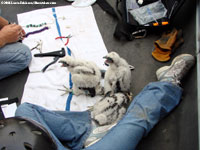 |
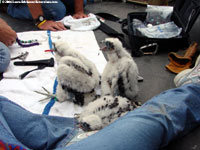 |
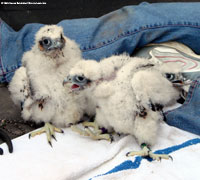 |
| |
|
|
 |
 |
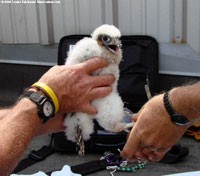 |
Resting easy in the OK Corral. |
|
And here's the second male, named Kekek, the Ojibwa name for bird of prey--Kelly Boedigheimer named him. |
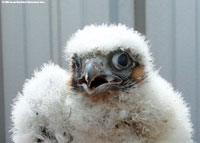 |
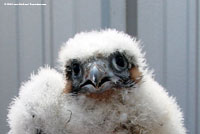 |
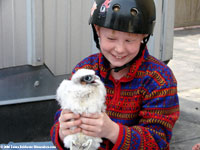 |
It's hard to say who's more adorable. |
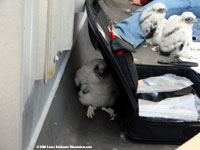 |
 |
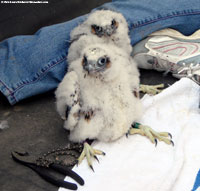 |
Our unnamed female found a place to hide away. Sort of. |
|
|
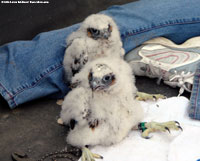 |
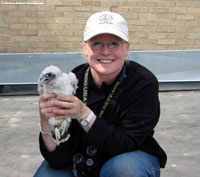 |
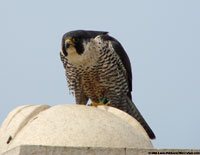 |
|
The ever-cheerful Julie O'Connor, a splendid ambassador for Peregrines! |
|
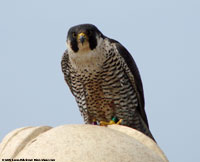 |
 |
 |
| |
|
|
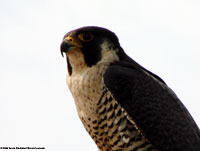 |
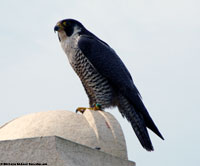 |
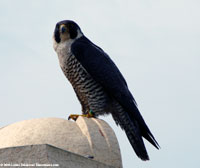 |
| |
|
|
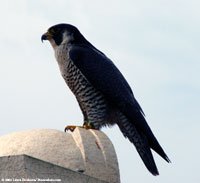 |
 |
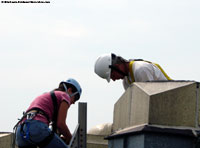 |
| |
|
Returning the babies to their nest. |
 |
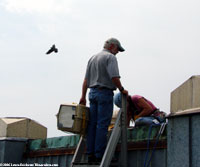 |
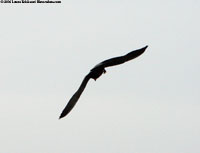 |
Banding these birds requires two trips to the nest. |
|
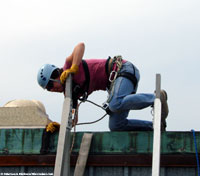 |
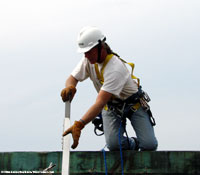 |
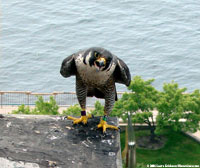 |
| |
|
She's on the edge of the ledge here. |
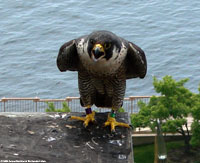 |
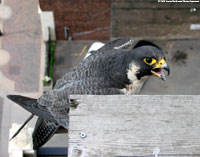 |
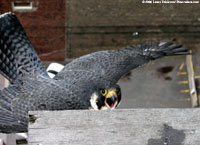 |
Rob took these photos for me while he was hanging over the ledge. She's on her usual perch in the box. |
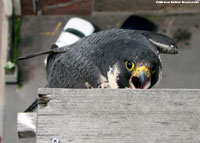 |
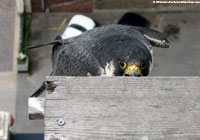 |
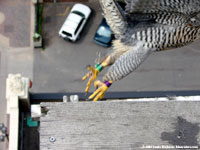 |
|
Rob went above and beyond the call of duty taking these cool photos from a vantage point I didn't have access to! |
Last year we would not have seen these bands in this shot--she was just banded a couple of weeks ago. |
 |
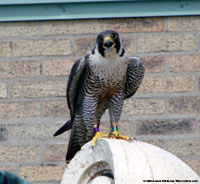 |
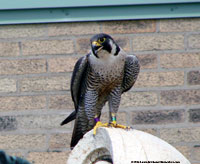 |
| |
|
|
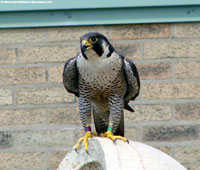 |
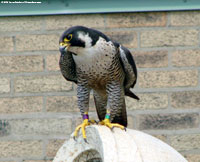 |
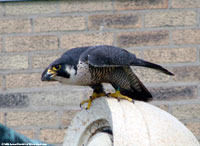 |
| |
|
|
 |
 |
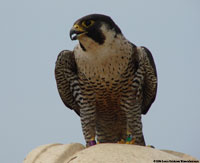 |
| |
|
|
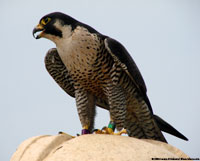 |
 |
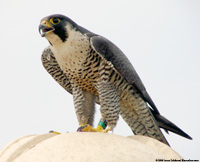 |
| |
|
|
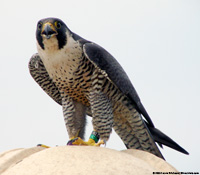 |
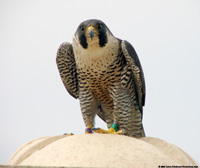 |
|
(I'm not a professional photographer, and am as likely to use photos for educational as aesthetic purposes. These photos may be used for educational purposes without permission. Please leave the copyright information on them. I'd also appreciate you linking to Birderblog.com or to Binoculars.com)


